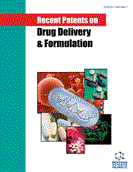Abstract
Epithelia in multicellular organisms constitute the frontier with the environment. Hence, epithelial cells are specialized in regulating the transit of ions and molecules from and into the organism. Therapeutic agents in order to reach their targets frequently need to cross epithelial sheets. Two routes are available for such purpose: the transcellular and the paracellular pathways. The former is employed by lipophilic drugs and by molecules selectively transported by channels, pumps and carriers present in the plasma membrane. Hydrophilic molecules cannot cross biological membranes. Therefore their transepithelial transport is significantly enhanced if they move through the paracellular pathway. Transit through this route is regulated by tight junctions (TJs). This review focuses on patented inventions designed to open the paracellular route in a reversible manner in order to enhance drug delivery across epithelial and endothelial barriers. In these patents, the paracellular route is opened by altering the TJ with peptides homologous to the external loops of integral proteins of the TJ, antisense oligonucleotides and siRNA for TJ proteins, toxins and proteins derived from microorganisms that target TJ proteins, and with other molecules such as peptides, lipids, heparins, chitosan derivatives, phospholipase inhibitors and kinase activators.
Keywords: Tight junctions, occludin, claudin, JAM, paracellular permeability, drug delivery, CPE, ZOT, heparin, chitosan
 8
8














